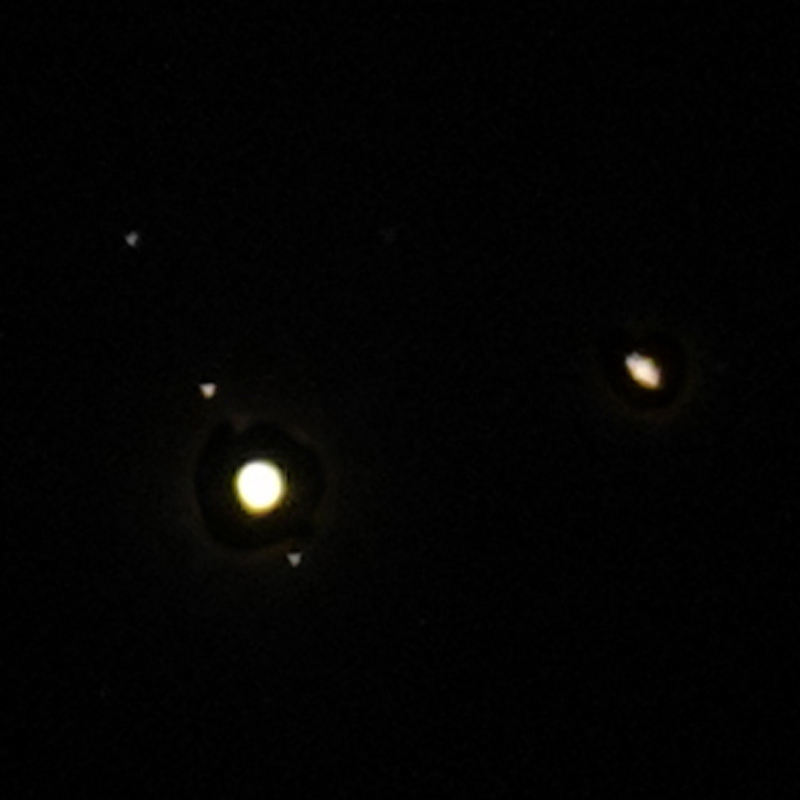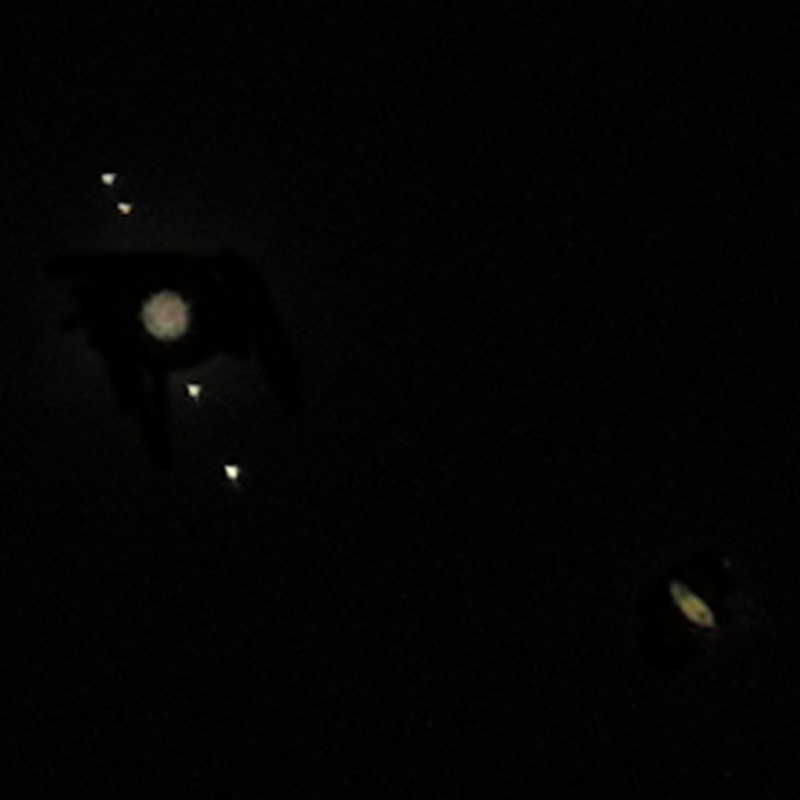
ARTICLE – On 12/21/2020 we witnessed the conjunction of Saturn and Jupiter. What really happened?
As I have mentioned in the past, they told me I should have been an astronaut as I was just taking up space in school, so let’s talk about space, specifically, last night’s Jupiter-Saturn conjunction.
Last night, about an hour after sunset, we were able to witness the much-hyped alignment of the planets Jupiter and Saturn, where they appeared in the southwestern sky less than one degree apart. What really happened and why was it a big deal?
There are nine planets in our solar system – yes, Pluto is a dwarf planet – we’re not going to argue about Pluto’s status here! All nine revolve in a circular to elliptical orbits around the sun, all at different rates. Think about the solar system like a nine-lane round-a-bout with no exits, but the lanes aren’t all circles, and the lanes are really far apart. The cars (planets) are zooming around in their own lanes are all driving at wildly different speeds.
On rare occasions, some of these “cars” all line up in a row at exactly the same time. That’s what happened last night – Earth, Jupiter, and Saturn all lined up. Plus, if we stick with the car analogy, us, here on Earth – on a 150cc scooter in lane three, lined up with two 18-wheelers – Jupiter and Saturn, in lanes 5 & 6. And, lanes 5 & 6 are about 6-2/3 and 12 times farther away from the center of the round-a-bout (the Sun) than we are in lane 3.
The two largest items in our solar system other than the Sun were in perfect alignment with Earth last night so they essentially appeared as nearly a single item in the sky. In the photo, you can see that there was still some visible space between Jupiter on the left and Saturn on the right, but in space terms, they were incredibly closely aligned. In the photo, you can also see three of Jupiter’s moons as well as Saturn’s rings.
To get even more perspective on this, you have to realize that we sit about 93 million miles from the Sun here on Earth. Jupiter is another 551 million miles away and Saturn is almost twice again as far at about 1 billion miles from Earth. To put that in perspective, if you hopped on I-75, set the cruise at 70mph, and headed for Saturn, it would take you over 1,500 years to get there, not counting bathroom and Waffle House stops.
To add even more perspective, the light that my camera captured in the photo is light produced by the Sun that traveled all the way to the planets, bounced off, and then traveled all the way here to central Florida where I was standing with my camera. That light traveled 1.195 billion miles for the image of Jupiter and 2.094 billion miles for the image of Saturn. It took that light about 90 minutes to leave the Sun, hit Jupiter, and then hit my camera’s lens. The light took about three hours for the roundtrip to Saturn.
The last time we saw an alignment like this was about 800 years ago. The next time will be in about 60 years, and then again in about 500 more years.
Some speculate that this alignment that produces one of the brightest items in the night sky was perhaps what the three wise men called the Star of Bethlehem. I don’t know if that was the case, but regardless, it was pretty cool to see last night.
So that’s the long and short of last night’s cosmic action.
On the evening of 12/22/2020, you can see that Jupiter and Saturn are moving away from each other. But, as a bonus, a fourth Jovian moon was pretty clearly visible, so there’s that.

I say “Merry Christmas”, but whatever holiday you celebrate this season, make it a good one, Gadgeteers! Best wishes for a wonderful holiday!
For what it’s worth, I captured these images with my Sony RX10-IV zoomed all the way out at 600mm. I did do a little editing to compensate for the wild differences in necessary exposures so that everything is visible and not just blobs.



Gadgeteer Comment Policy - Please read before commenting
Super-cool Garry! Those are great shots and you can actually see the structure in Saturn’s rings! We saw it here in DC as well (cloudy the first night, but clear the next night, and almost as good.)
Thanks, Hankk. I was pleasantly surprised with how well they turned out.
Pretty good pics from a camera. I used my Sony 6100 with 55-200 zoomed out, and was able to capture one round blob (Jupiter) and one elliptical blob (Saturn).
Thanks, John. I’m pretty happy with the RX10-IV. I’m still considering adding a Nikon P1000 for the 3,000mm reach, even given the camera’s compromises. Still haven’t decided.